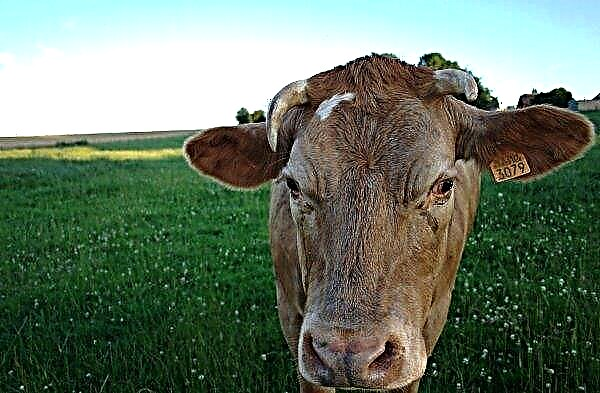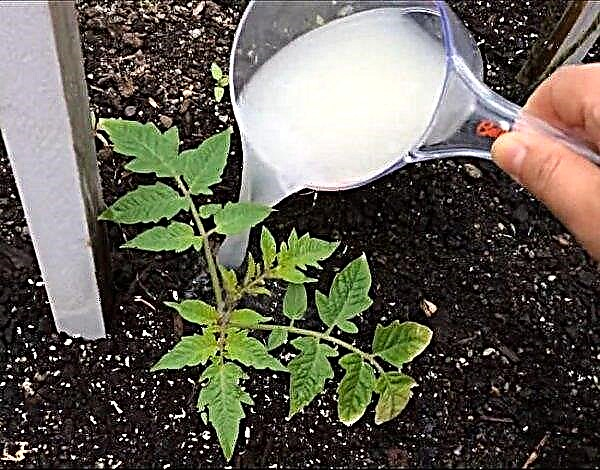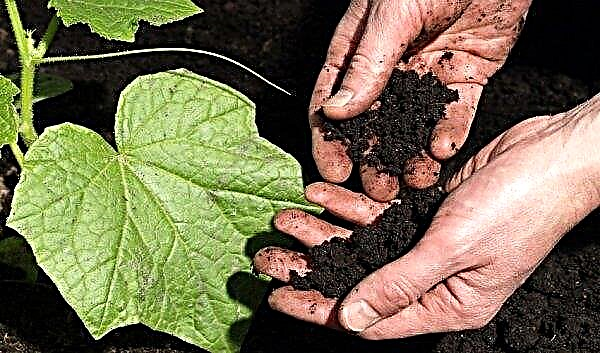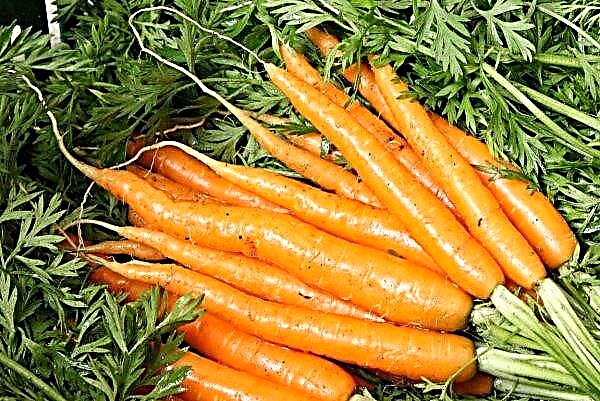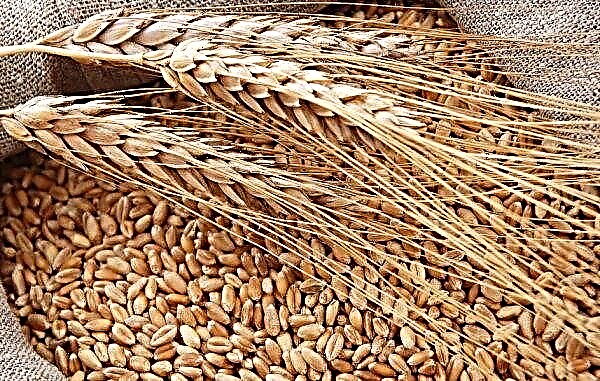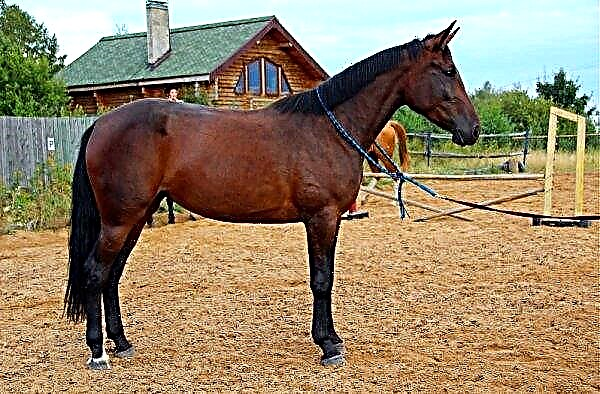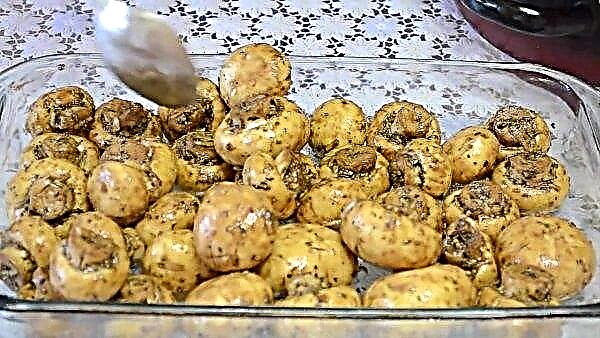You should not be very upset if you did not have time to enjoy picking mushrooms in the autumn-summer period. In the cold season, you can also find these goodies in the forest. One of the representatives of the winter species of mushrooms is Flammulina velvet-legged. We offer you to familiarize yourself with its description and photo.
Description of winter mushrooms
Flammulina velutipes - winter mushrooms, which belong to the third category of edibility. They were included in the Ryadovkov family, but some mycologists consider them representatives of the Negniyuchkovs. They develop in large groups, which is a common feature for mushrooms. This species is distributed throughout the planet (except for the Arctic), Russia is no exception.
How do they look
At the initial stage of maturation of honey agarics, their hat is round and convex, has curved edges, and becomes flat during growth. Its diameter reaches an average of 8 cm, sometimes specimens up to 10-12 cm are found. The surface of the cap is mucous, smooth, yellow in color with various red-brown shades. The mushroom pulp is tender and soft, with a light aroma. In adult specimens, a yellow-brown spot forms in the center of the cap.
Important!You can even get poisoned with edible mushrooms if they are not cooked correctly. Winter mushrooms must be boiled in salted water for at least 20 minutes and only then use them to prepare various dishes.
The leg has the shape of a cylinder, it is dense and elastic, sometimes curved. It reaches 8 cm in length. Its upper part is a light yellow or reddish hue, the lower part is brown (over time, it acquires a dark brown color). The leg is covered with a velvety coating with hairs. The fungus has rare plates (first grown and then loose) white-yellow in color, which are often shortened. With age, they darken.
When appear
Winter mushrooms can be found in September-October, but their active growth occurs in November. The period of appearance of the first mushrooms depends on the region of growth, climate and weather conditions.
When to collect
Experienced mushroom pickers begin mass gathering in mid-November and continue until February. This culture is resistant to frost, so you can pick mushrooms even under a layer of snow. If the found specimen crumbles upon contact, do not be upset: at room temperature it will thaw and acquire its original state.
Did you know?On the shelves of our stores you can also find winter mushrooms, they are only brought from Japan and are called "Enoki".
In frosty weather, the growth of mycelium practically stops, and during the thaw period it is restored. Therefore, if the sun warmed, you can safely go to the forest.
Where grow
The habitat of the winter honey fly is quite wide. They give preference to deciduous forests and plantings, and they can also be found in parks and gardens. Mushrooms can grow on stumps, fallen and rotting tree trunks. These plants develop well on ash, maples, aspen and fruit trees, less often on conifers. Such mushrooms can grow up to a height of 3 meters.
These plants develop well on ash, maples, aspen and fruit trees, less often on conifers. Such mushrooms can grow up to a height of 3 meters.
Worminess
In winter there are no worms: this is due to the period of their maturation, because in the cold season all insects and worms hide in the ground. If in autumn or spring you came across a wormy mushroom, this means that it is no longer young. It is better not to eat it, as adult fruiting bodies are hard and not tasty.
Important! Doctors do not recommend giving mushrooms to children under 7 years of age, because only by this age the child’s food system is fully formed. Even teenagers are advised to consume only cultivated mushrooms in small portions.
Medicinal properties of autumn mushrooms
In eastern medicine, preparations based on Velvetiston Flammulina are used to treat and prevent tumors and neoplasms (both benign and malignant). These mushrooms include flammulin (hence the second name for winter mushrooms), which is actively used in the fight against sarcoma and is used in the treatment of liver diseases, stomach and intestinal ulcers. Also, the fungus is used to strengthen the tone of the body, with vitamin deficiency and general malaise. It helps men fight potency problems.
These mushrooms include flammulin (hence the second name for winter mushrooms), which is actively used in the fight against sarcoma and is used in the treatment of liver diseases, stomach and intestinal ulcers. Also, the fungus is used to strengthen the tone of the body, with vitamin deficiency and general malaise. It helps men fight potency problems.
Dangerous mushrooms, similar to winter mushrooms
It is almost impossible to mix Flammoulin with some other mushroom during the winter harvest, but if you harvest in spring or autumn, you can make a mistake. Winter mushrooms, like many edible species, have doubles unsuitable for eating.
Colibia spindle-footed
This is an inedible species of mushrooms. It grows in the same places as winter mushrooms, ripening in the autumn-summer season. In young plants, the hat has a convex shape, in adults it becomes flat, reaching a diameter of 8 cm. The shape of the fungus is usually irregular, and a tubercle is visible in the center. The hat is red with a brown tint; during growth it becomes lighter. The pulp is tasteless, with a mild aroma. It is fleshy and has fibers of a light shade.
Did you know? Honey agaric is the largest living organism that exists today on Earth. This mycelium grows in the US state of Oregon. Its size has reached 890 ha, and estimated age varies from 2 to 8 thousand years.
The leg of the mushroom is thin (1.5 cm thick and 8 cm long), has the shape of a spindle and is covered with furrows. On it there is a root-shaped growth that deepens into the ground. The color of the legs does not differ from the hat, only closer to the root it looks a little darker. The mushroom plates are rare, of different lengths, grown rather weakly. Their color is predominantly white, but cream plates with brown rust spots are also found.
Poison fire
If you meet a colony of beautiful orange-colored mushrooms in the forest, you should bypass it. Most likely this is a fire-bomb, and some of its species can be very poisonous. Mushrooms bear fruit in the first half of autumn, but sometimes the peak of ripening coincides with the appearance of winter mushrooms. In a poisonous firefly the hat is convex, at the initial stage of growth it has the shape of a bell, and as it ripens it becomes flat. She has lowered edges and a felt fibrous surface covered with small scales.
The edges of the cap are lighter than the central zone. The pulp of the mushroom is thin fiber, elastic and elastic. It has a yellow color, and at the cut it becomes dark. The taste of the fire is very bitter, and the smell is pronounced putrid. The leg grows no more than 5 cm long and has the shape of a cylinder. At the base there is a thickening with a root-shaped narrowing. The lower part, as a rule, is curved; longitudinal fibers are present.
The cover is barely noticeable, yellow and ring-shaped. The color of the legs inside may be slightly lighter than the hat, but outside it is light, brownish-yellow with white coating. In young mushrooms, the leg color is initially dark, and the plaque appears later. The plates are densely arranged, they are thin and wide, almost completely adhered to the leg. In young specimens they are light yellow in color, while in mature specimens they are dark brown (can be covered with rusty spots).
Foamy Sulfur Yellow
These are poisonous mushrooms. They often grow in a ring near edible mushrooms. They appear in August and grow until September, although in favorable weather the dates of occurrence and fruiting may change (in warm autumn they grow until November). The cap of the mushroom is convex, slightly straightens with age. Its diameter is approximately 6 cm. A distinctive feature is the color of the hat: it is yellow on the top, red in the center, and the edges on the bottom are yellow-green.
Did you know? Mushrooms of some autumn mushrooms glow in the dark: mostly those that are located on rotten stumps.
The flesh of the mushroom is gray-yellow. It tastes very bitter and has an unpleasant odor. Leg yellow or yellow-green, cylindrical in shape with a brown base. In young mushrooms, the leg has remnants of film in the form of dark rings. The plates are grown, yellow, olive or gray-lemon color. In adult specimens, they become dark purple. Collect only those mushrooms in which you are sure to be edible. At the slightest doubt, go around the mycelium. Winter mushrooms can become an adornment of any festive table and surprise guests with their taste and aroma.
In adult specimens, they become dark purple. Collect only those mushrooms in which you are sure to be edible. At the slightest doubt, go around the mycelium. Winter mushrooms can become an adornment of any festive table and surprise guests with their taste and aroma.

